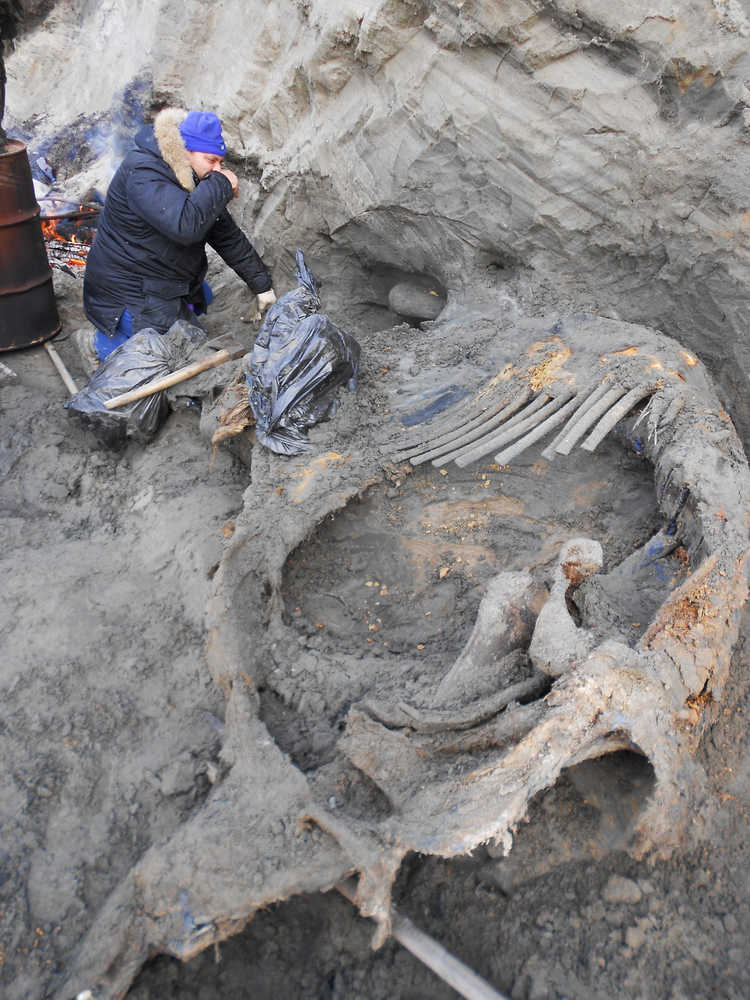NEW YORK — The remains of a mammoth that was hunted down about 45,000 years ago have revealed the earliest known evidence of humans in the Arctic.
Marks on the bones, found in far northern Russia, indicate the creature was stabbed and butchered. The tip of a tusk was damaged in a way that suggests human activity, perhaps to make ivory tools.
With a minimal age estimate of 45,000 years, the discovery extends the record of human presence in the Arctic by at least about 5,000 years.
The site in Siberia, near the Kara Sea, is also by far the northernmost sign of human presence in Eurasia before 40,000 years ago, Vladimir Pitulko of the Russian Academy of Science in St. Petersburg and co-authors reported in a paper released Thursday by the journal Science.
They also briefly report evidence of human hunting at about the same time from a wolf bone found well to the east. That suggests a widespread occupation, although the population was probably sparse, they said.
Daniel Fisher, a mammoth expert at the University of Michigan who did not participate in the study, said the markings on the mammoth bone strongly indicate human hunting. It makes sense to conclude that the hunters were from our own species rather than Neanderthals, John Hoffecker of the University of Colorado at Boulder commented in an email.
But Robert Park, an archaeologist at the University of Waterloo in Canada who has studied the bones of hunted animals in the far north, called the evidence for human hunting “pretty marginal.” The beast had been found with remains of its fat hump, while hunters would be expected to take the fat for food and fuel, he said. And the skeleton shows far less butchering than one would expect, he said.
Park emphasized he’s not ruling out the idea that the mammoth was hunted.
If people were living this far north that long ago, he said, it implies they had not only the technical abilities to carry out mammoth hunts, but also a social organization complex enough to share the food from the relatively rare kills.

